
The seagrass meadows of the Orkney Islands are some of the healthiest in the UK, supporting an abundant variety of marine life – a model for sustainable blue carbon conservation.
By Lewis Jefferies & Dr Richard Lilley, co-founder of Project Seagrass
The Orkney archipelago off the northeast tip of Scotland bears the full force of the elements. It’s where the North Sea meets the Atlantic Ocean at the Pentland Firth – a treacherous body of water separating Scotland and the Orkney Islands, home to some of the strongest and fastest tides on earth.
These wild isles are bursting with biodiversity. Orkney’s wealth of wildlife is a result of nutrient-rich waters brought up by the Gulf Stream from the Caribbean – which ensures a mild year-round climate compared with similar latitudes – and helps create a diverse range of habitats found across all of the archipelago’s 70 small islands.

The bountiful fish life supports half a million seabirds that nest along the sandstone cliffs, including around 60,000 puffins in the spring and summer. In the shallow bays surrounding the islands are large and healthy eelgrass (Zostera marina) meadows.
These flowering perennials are plants, unlike seaweed, which is an algae. They form eel-like, thin, green leaves that photosynthesise in the same way as plants do on land. Their bright fronds form dense meadows along the seabed, with complex root systems penetrating beneath the sand.
The meadows are crucial ecosystems and vital nurseries, spawning and feeding areas for commercially important fish species such as Atlantic cod and pollock and their prey.
In Europe, there was mass dieback of shallow-water seagrasses during the 1920s and ’30s due to disease, pollution and deteriorating water conditions. Globally, we have lost one-third of all seagrass meadows, and in the UK they are listed as a threatened and declining habitat.
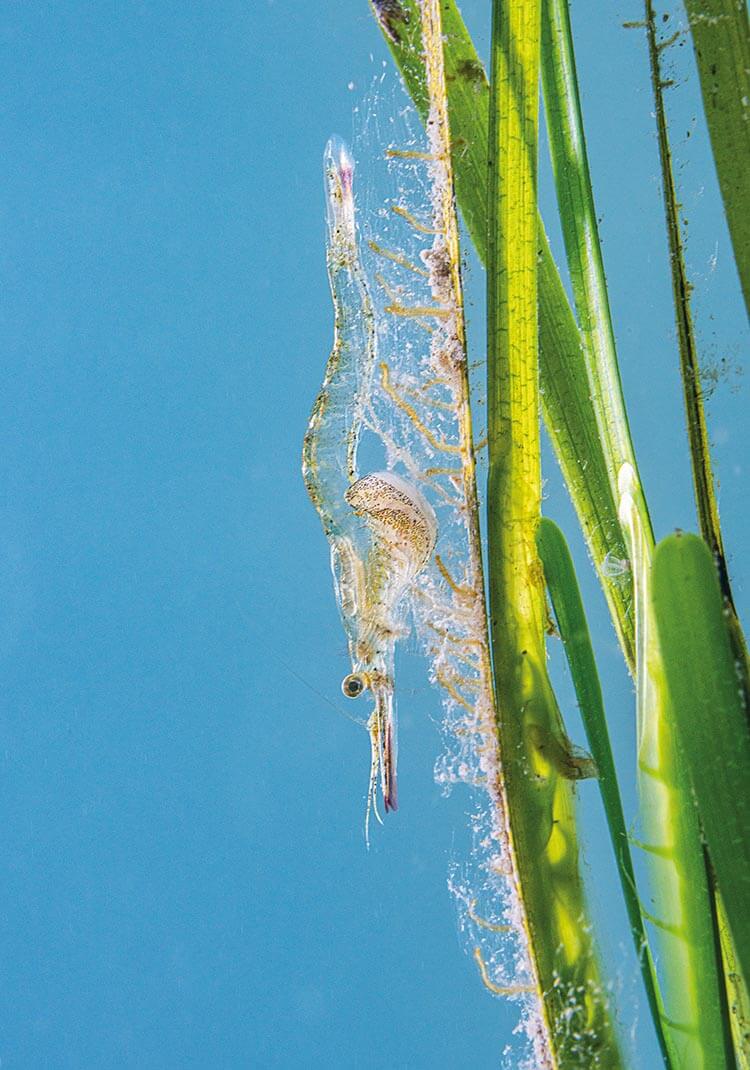
The Orkneys’ relatively clean and healthy waters are considered one of their strongholds. However, the seagrass meadows around Orkney have never been thoroughly mapped. A NatureScot report in 2014 raised the urgent need for detailed habitat maps of the meadows around the archipelago, particularly in the northern islands.
In 2021, this work began in earnest with Project Seagrass, a conservation charity, collaborating with local scallop diver Aitor Campos. To date, more than 120 hectares of seagrass have been mapped.
In the summer of 2022, team of scientists was assembled to further research some of these seagrass meadows in the more remote areas of the Orkney Islands and to take samples to study both the health and productivity of the ecosystems.
It was the start of a three-year programme of research, named Sjøgras (Norse for seagrass and a nod to the islands’ Viking heritage) to establish the extent of the biodiversity found in the meadows, and to assess their capacity to sequester and store carbon. The programme is a collaboration between Project Seagrass and Heriot-Watt University and is supported by whisky distillers Highland Park, based in Orkney.
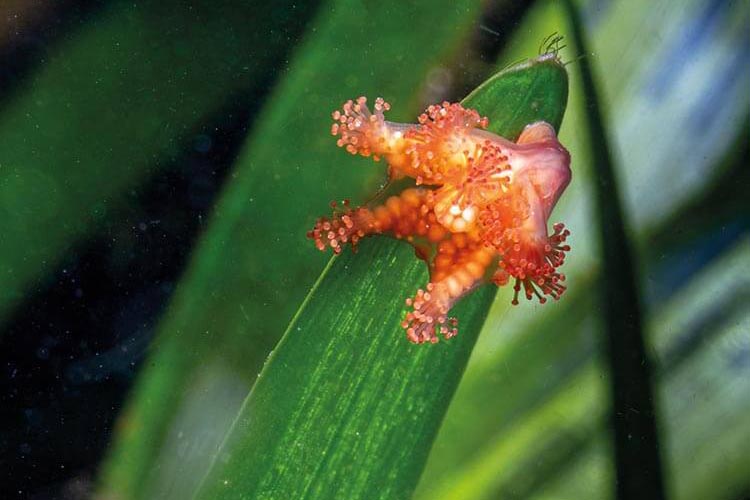
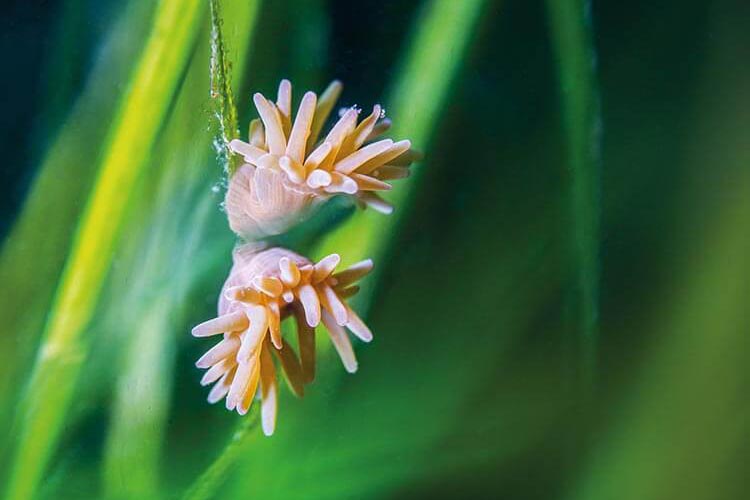
The team set off on the diving liveaboard MV Jean Elaine from Stromness, heading to Westray and the other Northern Isles. The first morning we moored in the Bay of Tuquoy on Westray, with the sun shining and glass-calm conditions.
After a briefing from expedition supervisor Professor Joanne Porter from Heriot-Watt University, we took our first dive to a sparkling, emerald meadow – healthy fronds of eelgrass gently swaying in the current.
There was a surprising abundance of marine life. We found nudibranchs, snails, crabs, shrimp, isopods and a rich diversity of schooling juvenile fish – all together indicating a healthy ecosystem.
Orkney’s positive approach to both marine and coastal management has meant that the seagrass meadows there are experiencing relatively low human impact. These are what our seagrass ecosystems could be across the UK and further afield if they were looked after.
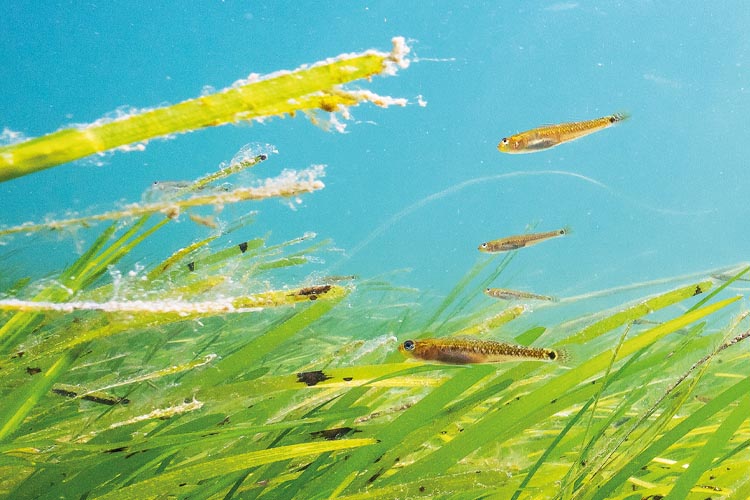
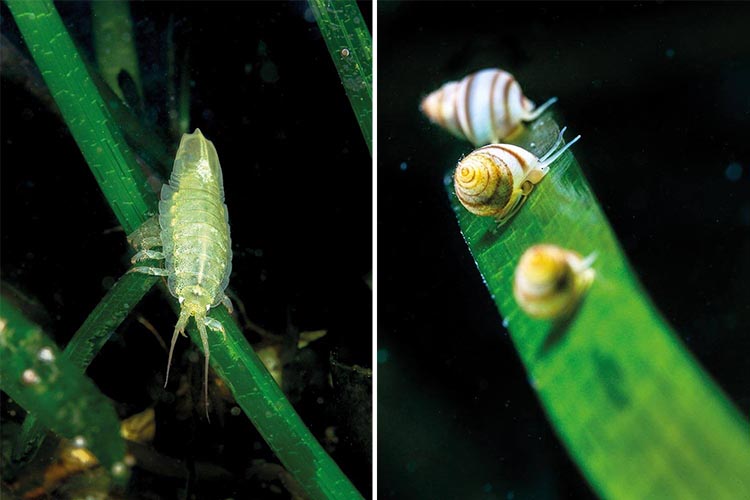
The scale and health of Orkney’s meadows, combined with a relatively intact mosaic of other marine habitats, make it a near-perfect place to study seagrass ecosystems.
The scientific team carried out a variety of research, beginning with taking a mixture of sediment cores from the seabed: larger diameter cores to analyse the seagrass sediments for infauna (animals within the sediment) and smaller core samples to establish the amount of carbon that has been sequestered in the sediments – what is known as ‘Blue Carbon’.
Globally, seagrasses occupy only 0.1 per cent of the sea floor, but they remove a third of all the carbon sequestered in the ocean. They remove carbon from our atmosphere at a greater rate annually than do tropical forests.
The dense underwater canopies formed by seagrass meadows filter out particles from the ocean’s flow, which are then deposited in the sea floor. Here, the absence of oxygen makes decomposition slower, and the carbon accumulates and is preserved in the sediments. By taking sediment samples from different locations, scientists are beginning to understand better the effectiveness of seagrass meadows at storing carbon.
One of their obvious advantages is that, unlike tropical rainforests, they are not prone to forest fires which return much ‘green carbon’ back into the atmosphere. Scientists increasingly believe that they could play a crucial role in mitigating the worst effects of climate change by supporting long-term carbon storage.
The team also conducted surveys of the small animals living on the seabed and submerged surfaces, and fish biodiversity surveys to record what is living among these meadows. When carrying out surveys, the team recorded video footage and took notes of species that were found; the footage was then analysed back on the boat to assess accurately species abundance and diversity, helping to give an assessment of populations present in a particular area.
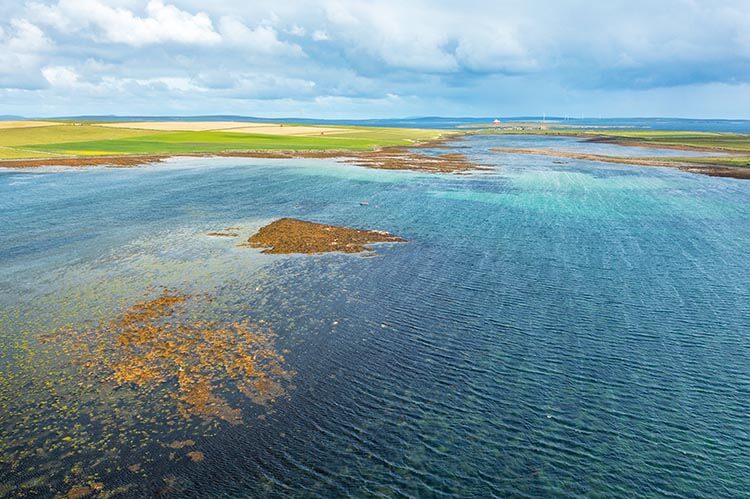
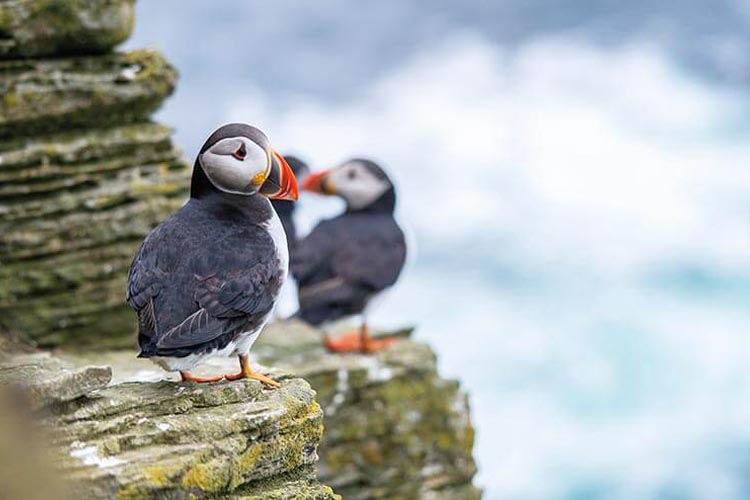
With this information, links can be drawn between the benthic life and fish life present within a meadow and be can be compared to other sites to determine the productivity of individual meadows.
Conducting this research now is more important than ever. In a two-way process, climate change is one of the key drivers of biodiversity loss, but our continued destruction of ecosystems is also undermining nature’s ability to regulate greenhouse gas emissions and protect against extreme weather, accelerating climate change and increasing our vulnerability to it. The climate and biodiversity crises are two sides of the same coin; they must be tackled together.
As often happens in Orkney, a sudden change in weather, with high winds blowing from the Atlantic forced the team to seek shelter after the second day and to explore the meadows along the eastern coastline. For the next few days, we moored at rarely-explored seagrass meadows, each with unique varieties and a rich tapestry of life across them all.
Our route back to Stromness took us inside Scapa Flow to a shallow site named Mallow Bank. The dive team embarked on their dive, and the visibility was poor with a ripping current, but this seemed to have attracted an abundance of fish. Large shoals of juvenile pollock and Atlantic cod were swimming in the currents, darting in and out, using the shelter of the meadow for safety – in addition to plenty of adult nudibranchs laying eggs and already hatched juveniles.

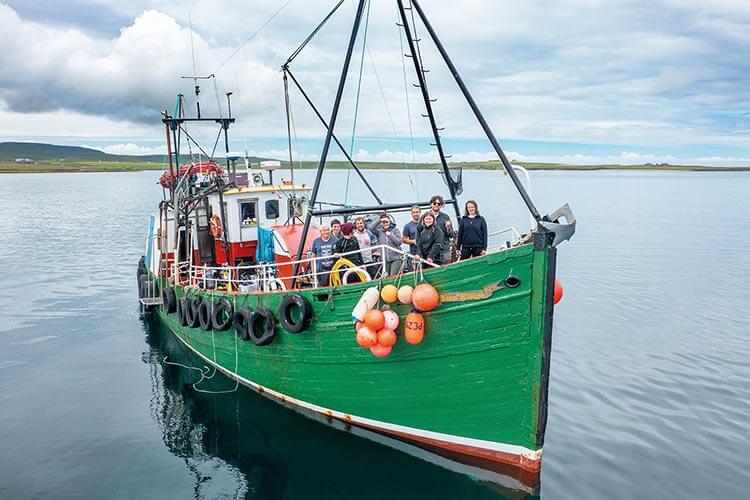
These meadows are crucial for juvenile fish, as they not only use them for protection from predators, but they also feed on invertebrates and molluscs living among them. These juveniles will grow and swim out to sea to support the adult population. If fish nursery grounds are not present, then the adult fish will soon vanish and, in turn, fisheries will collapse.
Seagrasses are under threat worldwide, and estimates suggest we lose an area of seagrass around the same size as two football pitches every hour. In the UK alone, we have lost up to 44 per cent of our seagrass cover since the 1930s.
As a result of their need to grow in a shallow coastal location, seagrass meadows often come into direct human contact. The anchoring of boats and other recreational activities, in addition to agricultural runoff and sedimentation, all put these meadows under immense pressure, so it’s important to protect what we have – by creating awareness of meadow locations and knowledge about the ecosystem services they provide – as well as restoring areas previously lost.
In this, the UN Decade On Ecosystem Restoration, Orkney’s meadows represent a natural seed bank and an ambitious lodestar of what seagrass meadows could look like across the UK one day.
Already, seeds from Orkney are helping to replenish meadows in the Firth of Forth.
To find out more about seagrass ecosystems go to www.projectseagrass.org
Related articles:



